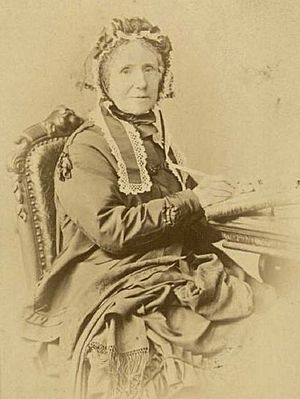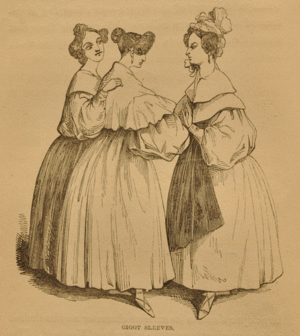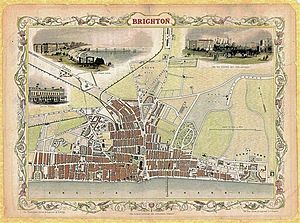Mary Philadelphia Merrifield facts for kids
Quick facts for kids
Mary Philadelphia Merrifield
|
|
|---|---|
 |
|
| Born |
Mary Philadelphia Watkins
15 April 1804 Brompton, England
|
| Died | 4 January 1889 (aged 84) Stapleford, Cambridgeshire, England
|
| Nationality | British |
| Occupation | Author & artist |
| Spouse(s) | John Merrifield (c.1791-1877) |
| Children | 5, including Charles Watkins Merrifield and Frederick Merrifield. Other children Henry b.1830, Emily b.1835 & Edward b.1836 |
| Parent(s) | Sir Charles Watkins |
| Relatives | Grand-daughters Margaret Verrall and Flora Merrifield |
Mary Philadelphia Merrifield (born Watkins; 15 April 1804 – 4 January 1889) was a talented British writer and artist. She wrote about art and fashion. Later in her life, she became an expert in seaweed, which is a type of plant that grows in the ocean.
Contents
Mary Merrifield's Early Life
Mary Philadelphia Watkins was born in Brompton, London in 1804. Her father, Sir Charles Watkins, was a lawyer who dealt with property. In 1826 or 1827, she married John Merrifield. They had two sons, Charles Watkins Merrifield in 1827 and Frederick Merrifield in 1831. The family later moved to Brighton.
Mary Merrifield's Work in Art
While her husband worked as a lawyer, Mary started her own projects. She translated an old book about painting. This book was written by a 15th-century artist named Cennino Cennini. Her translated book, called Treatise of Painting, was published in 1844.
In 1846, Mary published another book, The Art of Fresco Painting. She wrote this book for the Royal Commission on the Fine Arts. Her two sons helped her with this project. In 1850, Mary showed her own paintings. They were part of the first art exhibition ever held at Brighton's Royal Pavilion.
Mary Merrifield's Ideas on Fashion
In 1854, Mary wrote about a different topic: fashion. Her book was called Dress as a Fine Art. In this book, she supported new ideas about clothing. She liked the more practical clothing ideas of Amelia Bloomer. Mary showed that fashion was not just about looks. It could be studied scientifically. She proved that people interested in fashion could also be serious thinkers.
Mary Merrifield's Interest in Nature
Mary also became interested in local history. In 1857, she published Brighton Past and Present. This book showed her knowledge of the area. In the same year, she received a special payment of £100 per year from the government. This was called a civil list pension.
She used her time in Brighton to study nature. She wrote A Sketch of the Natural History of Brighton. This book, along with other scientific papers, made her an expert on seaweed. In the 1870s, she published even more papers about natural history.
Mary was so keen to talk with a naturalist named Jacob Georg Agardh that she learned Swedish! Agardh was impressed by her. He named an Australian type of seaweed after her. It was called Rytiphlaea Merrifieldiae. Mary continued to publish articles in the British science magazine Nature. She also helped set up natural history displays at the Brighton Museum and Art Gallery.
Mary Merrifield's Legacy
Mary Merrifield passed away on 4 January 1889. She was a widow and died at her daughter's home in Stapleford. Her collections of plants are now kept at the Natural History Museum in London. Some examples are also at the Booth Museum of Natural History in Brighton.
Her son, Frederick Merrifield, later became the head of the Brighton School of Art. Her granddaughter, Margaret Verrall, became a scholar of ancient Greek and Roman studies. Another granddaughter, Flora Merrifield, worked to help women get the right to vote in Sussex. Mary's work was shown in a special display at Brighton's Booth Museum of Natural History in 2019.
Mary Merrifield's Books
- Treatise of Painting (translation) - 1844
- The Art of Fresco Painting - 1846
- Original Treatises on the Arts of Painting - 1849
- Practical Directions for Portrait Painting in Watercolours - 1851
- Dress as a Fine Art - 1854
- Handbook of Light and Shade with Reference to Model Drawing - 1855
- Brighton Past and Present - 1857
- A Sketch of the Natural History of Brighton - 1864



